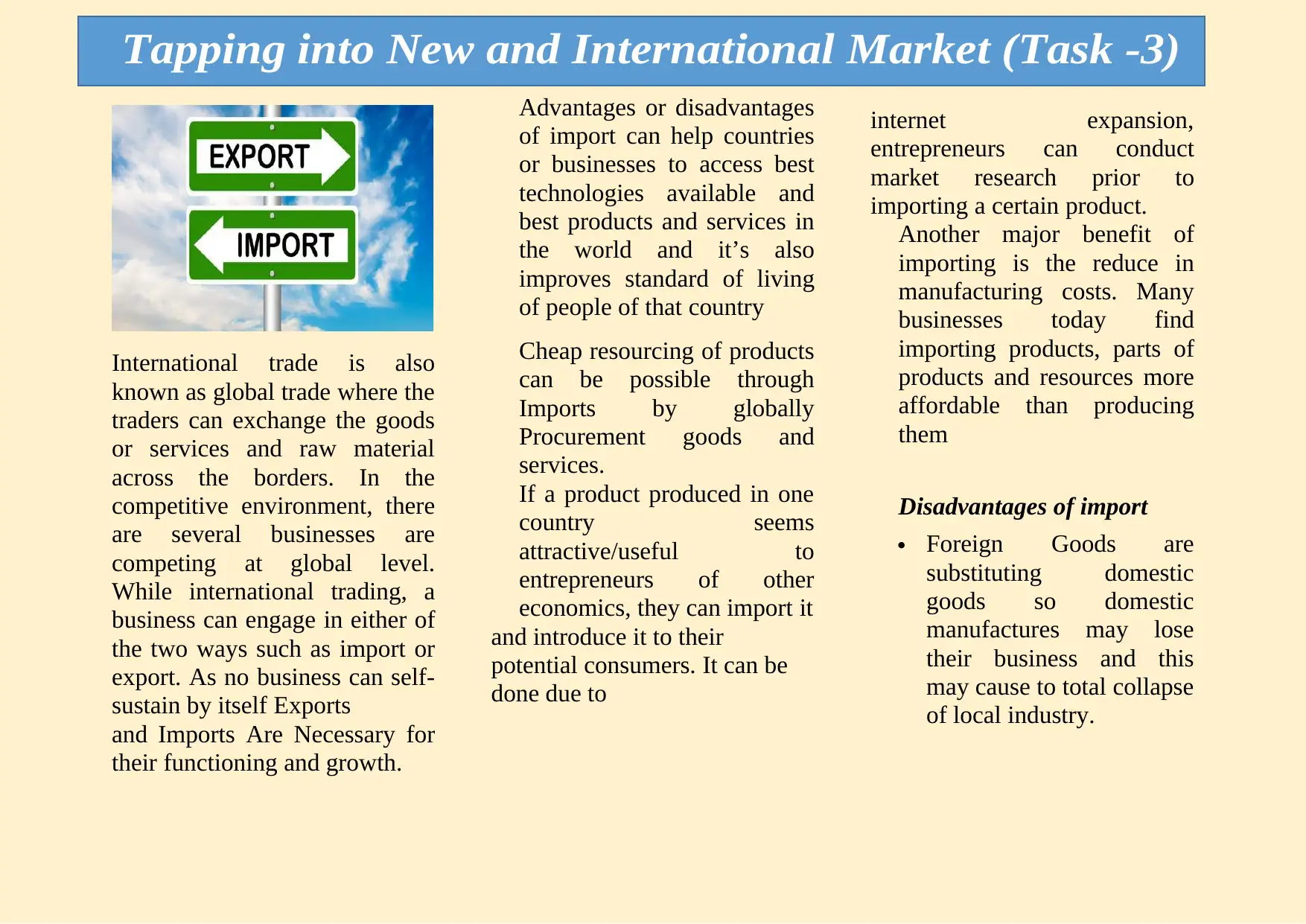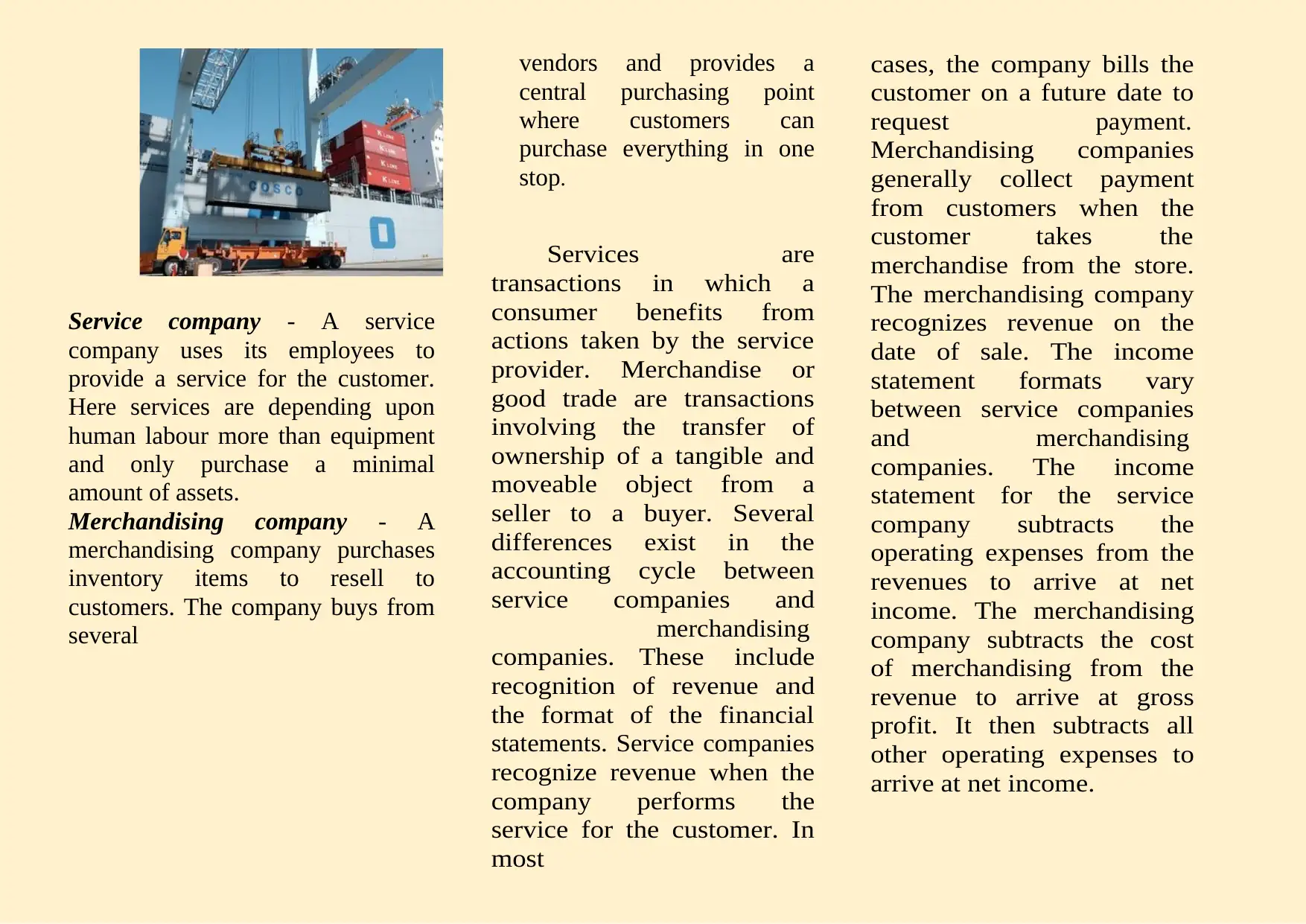Analyzing the Impact of International Trade: Import & Export Dynamics
VerifiedAdded on 2023/03/16
|4
|707
|30
Report
AI Summary
This report provides a comprehensive analysis of import and export, crucial components of international trade. It explores the advantages, such as access to better technologies, improved living standards, and the ability to source goods and services at competitive prices, which are beneficial for businesses and countries. The report also outlines the disadvantages, including potential harm to domestic industries, foreign exchange losses, and the risk of unemployment. Furthermore, the document covers how businesses can engage in international trade and the key differences between service and merchandising companies, including how revenue is recognized and the format of financial statements. The report emphasizes the importance of understanding both the benefits and drawbacks to develop effective business strategies in a globalized market.
1 out of 4










![[object Object]](/_next/static/media/star-bottom.7253800d.svg)